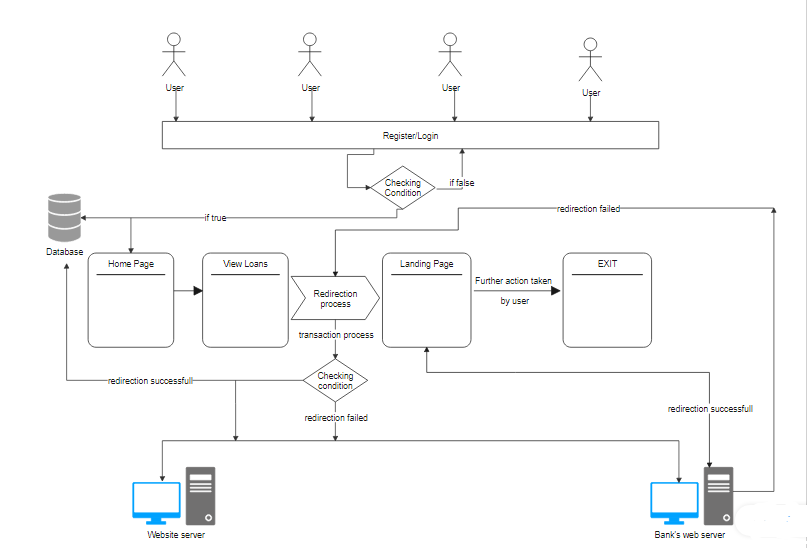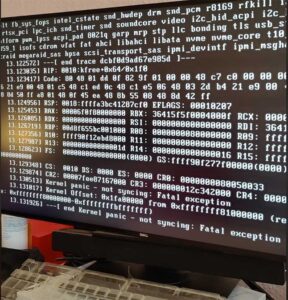The Art and Science of Squashing Bugs
In the world of software development, writing code is only half the battle. The other, often more challenging half, is ensuring that code works as intended. This is where testing and debugging come into play. Every developer, from a junior engineer writing their first “Hello, World!” application to a seasoned architect designing complex microservices, will inevitably encounter bugs. These elusive errors can range from simple typos to complex race conditions that only appear under specific, hard-to-replicate circumstances. Effective debugging is not just a technical skill; it’s a systematic process of investigation, hypothesis, and validation. It’s the detective work of software engineering.
While testing is the proactive process of verifying that code meets its requirements, debugging is the reactive process of finding and fixing defects when the code fails. A solid testing strategy can significantly reduce the number of bugs that make it to production, but it can never eliminate them entirely. This article provides a comprehensive guide to the essential techniques, tools, and best practices for mastering software debugging across the full stack, from frontend user interfaces to backend APIs.
The Foundations of Effective Code Debugging
Before diving into sophisticated tools, it’s crucial to understand the fundamental principles that underpin all debugging efforts. A methodical approach will save you countless hours of frustration. It all begins with a clear mindset and a few core techniques.
The Debugging Mindset: From Panic to Process
When a bug appears, the initial reaction is often to start changing code randomly, hoping to stumble upon a fix. This is rarely effective. Instead, adopt a scientific method:
- Reproduce the Bug: The first and most critical step. If you can’t reliably reproduce the error, you can’t verify that you’ve fixed it. Identify the exact steps, inputs, and environment conditions that trigger the bug.
- Understand the Error: Read the error message and stack trace carefully. A
TypeError: Cannot read properties of undefinedin JavaScript or aKeyErrorin Python provides valuable clues about what went wrong and where. - Formulate a Hypothesis: Based on the evidence, make an educated guess about the root cause. For example, “I hypothesize that the user object is null when the `processUserData` function is called.”
- Test Your Hypothesis: Use debugging techniques to verify your guess. This is where you inspect variables, trace execution flow, and gather more data.
- Fix and Verify: Once you’ve confirmed the cause, implement a fix. Then, run the exact reproduction steps again to ensure the bug is gone and run your test suite to ensure you haven’t introduced any new ones (regressions).
Core Techniques: Logging, Breakpoints, and Stack Traces
The simplest form of debugging is often called “printf debugging,” which involves scattering print statements throughout your code to trace its execution and inspect variable states. While basic, it’s surprisingly effective. In Python, you can use the built-in debugger, pdb, for more interactive control.
Consider this simple Python function with a logical error:
import pdb
def calculate_average_price(items):
"""Calculates the average price of a list of items."""
total_price = 0
# Bug: The list of items might be empty!
for item in items:
total_price += item['price']
# This will raise a ZeroDivisionError if items is empty
average = total_price / len(items)
return average
products = []
# To debug this, we can set a trace before the potential error
pdb.set_trace()
try:
avg_price = calculate_average_price(products)
print(f"The average price is: ${avg_price:.2f}")
except ZeroDivisionError as e:
print(f"An error occurred: {e}")
Running this code will drop you into the Python debugger right before the function call. You can then step through the code line by line (using the n command for ‘next’), inspect variables (p items), and see exactly why the ZeroDivisionError occurs. This interactive approach is far more powerful than just reading a static stack trace.
Mastering Frontend and Browser Debugging

Modern web applications are complex, often involving intricate state management, asynchronous data fetching, and dynamic DOM manipulation. Fortunately, browsers come equipped with powerful developer tools that provide deep insight into what’s happening on the client side.
Your Command Center: An In-Depth Look at Chrome DevTools
While other browsers have similar tools, Google Chrome DevTools is a de facto standard for web debugging. Key panels include:
- Console: View logs, run arbitrary JavaScript, and interact with the
windowobject. It’s the first place to look for JavaScript Errors. - Elements: Inspect and modify the HTML and CSS of the page in real-time. Useful for debugging layout and styling issues.
- Sources: View the source code, set breakpoints to pause execution, and step through your JavaScript code. This is the heart of JavaScript Debugging.
- Network: Analyze all network requests. Invaluable for API Debugging, you can inspect request headers, payloads, and response data to see if the frontend is communicating correctly with the backend.
Dissecting the UI: React, Vue, and Angular Debugging
Frameworks like React introduce a layer of abstraction over the DOM. While you can use standard browser tools, framework-specific extensions make life much easier. For React Debugging, the React Developer Tools extension is essential.
Imagine a simple React counter component with a subtle bug where the state isn’t updating as expected.
import React, { useState } from 'react';
function Counter() {
const [count, setCount] = useState(0);
// Bug: This handler uses the stale 'count' value from the closure
const handleTripleIncrement = () => {
setCount(count + 1);
setCount(count + 1); // Still sees count as 0
setCount(count + 1); // Still sees count as 0
};
// Correct way using a functional update
const handleCorrectIncrement = () => {
setCount(c => c + 1);
};
return (
<div>
<h2>Count: {count}</h2>
<button onClick={handleTripleIncrement}>Increment by 3 (Buggy)</button>
<button onClick={handleCorrectIncrement}>Increment by 1 (Correct)</button>
</div>
);
}
export default Counter;
Clicking the “Buggy” button will only increment the count to 1, not 3. Using the React DevTools, you can select the `Counter` component, inspect its `state` hook, and observe that it only changes once. By placing a `debugger;` statement or a breakpoint in the `handleTripleIncrement` function within the Sources panel, you could step through and see that the `count` variable has the same value (the one from the initial render) in all three `setCount` calls. This highlights the importance of understanding framework-specific concepts like state closures during frontend debugging.
Tackling Backend and API Debugging
Backend debugging presents its own set of challenges. There’s no visual interface to inspect, and issues often involve databases, third-party APIs, or complex asynchronous logic. A robust backend debugging strategy relies on great tooling and a deep understanding of the runtime environment.
Server-Side Sleuthing with Node.js
For Node.js Development, the V8 inspector protocol allows you to connect powerful debuggers, such as the one built into VS Code or Chrome DevTools, to your running Node.js process. This enables a rich debugging experience with breakpoints, call stack inspection, and a debug console, even for a remote server (Remote Debugging).
Let’s consider a common scenario in an Express.js application where a middleware function forgets to call `next()`, causing the request to hang indefinitely.

const express = require('express');
const app = express();
const port = 3000;
// Middleware to "authenticate" a user
const buggyAuthMiddleware = (req, res, next) => {
const { authorization } = req.headers;
console.log('Checking authentication...');
// Bug: If there's no authorization header, the function exits
// without calling next() or sending a response. The request hangs.
if (!authorization) {
console.error('No authorization header found!');
// FIX: return res.status(401).send('Unauthorized');
return; // This is the bug!
}
// Pretend to validate the token
req.user = { id: 123, name: 'Alice' };
console.log('User authenticated.');
next();
};
app.use(buggyAuthMiddleware);
app.get('/api/profile', (req, res) => {
res.json(req.user);
});
app.listen(port, () => {
console.log(`Server listening on port ${port}`);
});
If you run this server and make a request to `/api/profile` without an `authorization` header, the request will time out. By launching this application with the VS Code debugger, you can set a breakpoint inside `buggyAuthMiddleware`. When you make the request, execution will pause. You can then step through the `if` block and observe that the function simply returns, never calling `next()` to pass control to the next handler. This makes it immediately obvious why the request is hanging, a common problem in Express Debugging and Async Debugging.
Advanced Strategies and Modern Best Practices
As systems grow in complexity, debugging requires more than just breakpoints and console logs. Modern applications, often built as distributed microservices running in containers, demand a more holistic approach to observability and error tracking.
Beyond the Console: Structured Logging and Error Tracking
Simple `console.log` statements are messy in production. Structured logging, using libraries like Winston or Pino for Node.js, writes logs in a consistent JSON format. This makes them machine-readable, searchable, and easy to analyze with log aggregation tools like the ELK Stack (Elasticsearch, Logstash, Kibana) or Datadog.
Error Tracking services like Sentry or Bugsnag take this a step further. By integrating their SDKs, your application can automatically report exceptions to a central dashboard. These reports include the full stack trace, device information, user context, and release version, making Production Debugging and Bug Fixing significantly faster.
Debugging in Complex Environments: Microservices and Containers

In a microservices architecture, a single user request might traverse multiple services. Tracing that request across service boundaries is a major challenge. This is where distributed tracing tools like Jaeger or Zipkin become essential. They provide a holistic view of the entire request lifecycle, helping you pinpoint which service is failing or causing a performance bottleneck.
When dealing with containers (Docker Debugging, Kubernetes Debugging), the key is to get access to the running process. You can use `docker exec` to get a shell inside a running container to inspect logs or attach a debugger. Many IDEs and tools also have direct integrations for debugging applications running inside a container, abstracting away the underlying complexity.
Proactive Debugging: Static Analysis and Linters
The best way to fix a bug is to prevent it from being written in the first place. Static Analysis tools and linters (like ESLint for JavaScript/TypeScript, Pylint for Python) enforce coding standards and catch common patterns of errors before the code is even run. Integrating these tools into your CI/CD pipeline is a critical best practice for maintaining code quality and reducing the debugging workload.
Conclusion: Cultivating a Debugging Culture
Testing and debugging are not afterthoughts; they are integral parts of the software development lifecycle. Mastering these skills transforms a developer from a simple coder into a proficient problem-solver. The journey begins with adopting a systematic, hypothesis-driven approach and understanding the fundamental tools at your disposal, like browser dev tools and language-specific debuggers.
As you progress, embrace more advanced techniques. Implement structured logging for better observability in production. Use Error Monitoring services to catch bugs before your users do. Leverage the power of IDE debuggers for both Frontend Debugging and Backend Debugging. By combining the right tools with a methodical mindset, you can dramatically reduce the time spent hunting for bugs and increase the time spent building robust, high-quality software. The ultimate goal is to create a culture where bugs are seen not as failures, but as opportunities to learn and improve both the codebase and our own skills.










